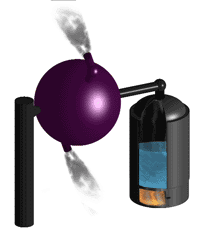WWW.MASSENGINEERS.COM 3rd Class Engineer Written (2010)
1. Why are large pressure drops required in Curtis Stages?
2. What is electrolysis?
3. What is latent heat and internal latent heat?
4. What is deareation (mechanical)?
5. On an engine would the stroke vary with the load?
6. What is NPSH and the difference between available and required?
7. How many Btu’s in a horsepower hour and how many in a kilowatt-hour?
8. If you have two safety valves on a boiler not singularly mounted what are the requirements for the valves?
9. When do you need two safety valves on a boiler?
10. What are chlorides?
11. How do you determine the area of a piston?
12. Why do we superheat steam?
13. What does SO˛ do to the boiler and its negative effects?
14. What are shroud bands and what do they do?
15. How many governors do you need to operate a turbine?
16. Which of the following effect combustion at the burner?
A. Viscosity
B. Pour Point
C. Fire Point
D. Flash Point
17. How do you know when to close the main steam stop? The Header Valve?
18. How do you know when to stop feeding water into a boiler?
19. What is kinetic energy? Give an example?
20. What is the benefit in efficiency of an economizer? Copy & Paste the question above into the search box to find your answer.
Disclaimer Remember it is how the applicants remembered the questions. Note: Exams are not the original content may be different.
Visit www.massengineers.com for more engineering exams and job opportunities. Massengineers website now has out of print, and used engineering books sell. Hard to find classic and collectible steam engineering, power plant, steam boiler books.
Send Exams to [email protected] 
|